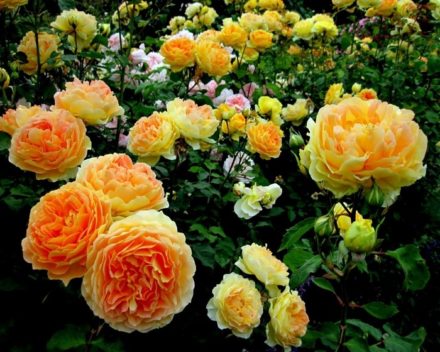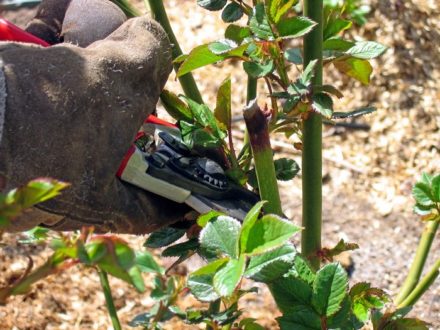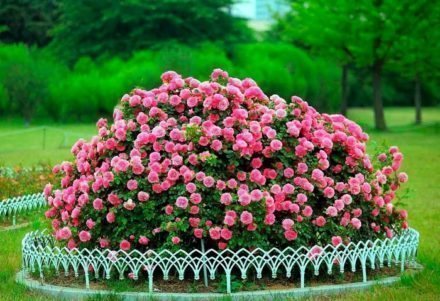For its abundant, long-lasting flowering, the rose is called the queen of the garden. The plant spends a lot of energy on the formation of buds, so it needs careful care. If you do not provide the rose with suitable conditions, it may get sick. You can often see a white coating on the leaves of the plant. The sooner treatment is started, the greater the chance of ridding the rose of a fungal infection.
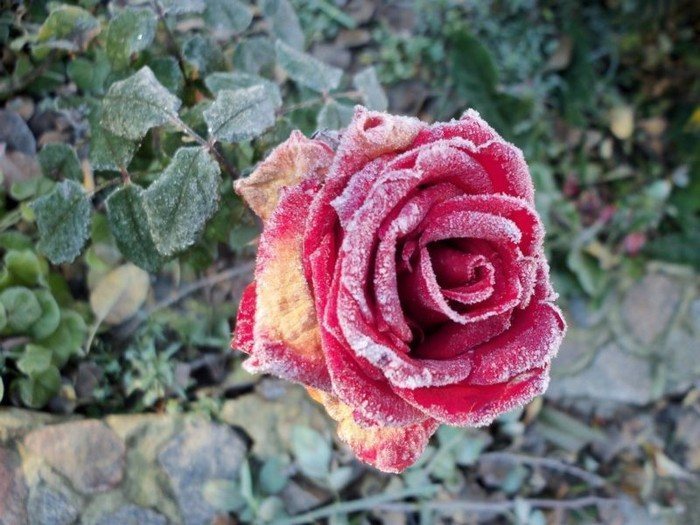
What disease causes a white coating to appear on roses?
To successfully cope with a problem, you need to understand what caused it. A white coating on roses appears when they are affected by powdery mildew. Similar symptoms can be seen on the leaves, stems and buds of the plant.
The disease is fungal in nature. If action is not taken immediately, powdery mildew will soon completely infect the plant and may spread to neighboring plantings. This fungal disease threatens many garden and vegetable crops. Lack of treatment will lead to the death of the rose.
Hybrid tea and remontant varieties are most susceptible to powdery mildew. Contribute to the development of the disease:
- insufficient lighting;
- thickening of bushes;
- sudden temperature changes;
- increased air and soil humidity;
- excess nitrogen in the soil.
The more of these factors combine, the higher the risk of developing infection. At the initial stage, folk remedies will help get rid of powdery mildew. In advanced cases, they resort to the use of fungicides.
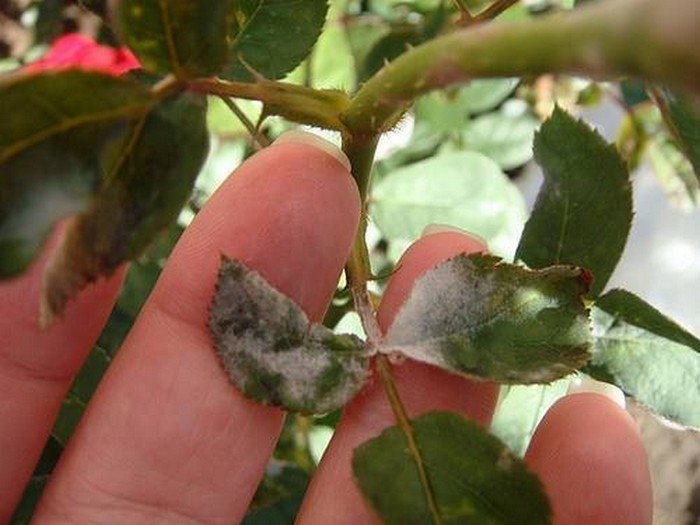
Treatment with folk remedies
To get rid of powdery mildew at the initial symptoms, use folk remedies that can be found in every home. This list includes:
- Soda solution. To prepare it, you can use both baking soda and soda ash. Add 1 tbsp to 4 liters of warm water. l. soda and 1 tsp. dishwashing detergents. The cooled solution is sprayed on rose bushes in dry weather.
- Wood ash. A liter jar of ash powder is poured into a bucket of warm water. The composition should brew for 5 days, stirring it periodically. The finished infusion is filtered, 1 tbsp is added to it. l. shavings of laundry soap, mix and treat the bushes with a spray bottle. The remaining sediment can be refilled with water, infused and reused for irrigation as fertilizer.
- Mustard. The fungus is afraid of contact with a caustic substance. The solution is prepared from 10 liters of hot water and 2 tbsp. l. mustard powder. Treatment is carried out by spraying roses and watering the soil in the root zone.
- Milk serum. Use the product diluted (1:10 with water). Diseased roses are sprayed early in the morning in dry weather.
- Potassium permanganate. Add 3 g of potassium permanganate crystals to a bucket of water. The solution is used for watering and spraying diseased plants.
If you can get rotted cow dung, it can also be used to treat a fungal infection. First, 1 liter of mullein is dissolved in 3 liters of water and allowed to brew for 3-4 days. Then the composition is filtered, half diluted with water and used for spraying. When using any folk remedy, 2 or 3 treatments will be required with a break of 1 week.
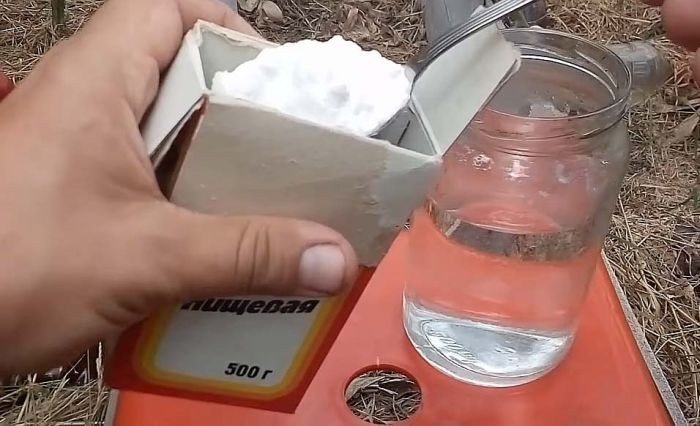
Application of fungicides
In case of mild damage, roses are treated against powdery mildew with 1% Bordeaux mixture or a solution of copper oxychloride (40 g per 10 liters of water). If the plant is heavily infected, modern fungicides are used:
- Previkur Energy;
- "Tiovit Jet";
- "Pure Flower";
- "Foreshortening";
- "Topaz";
- "Skor."
The solution for treatment is prepared in accordance with the instructions for the drug. For reliability, it is better to carry out 2-3 treatments with an interval of 1-1.5 weeks. The affected shoots and diseased leaves of the roses are first cut off. Additionally, the bush is thinned. It will be useful to replace the top layer of soil under the plant where fungal spores accumulate.
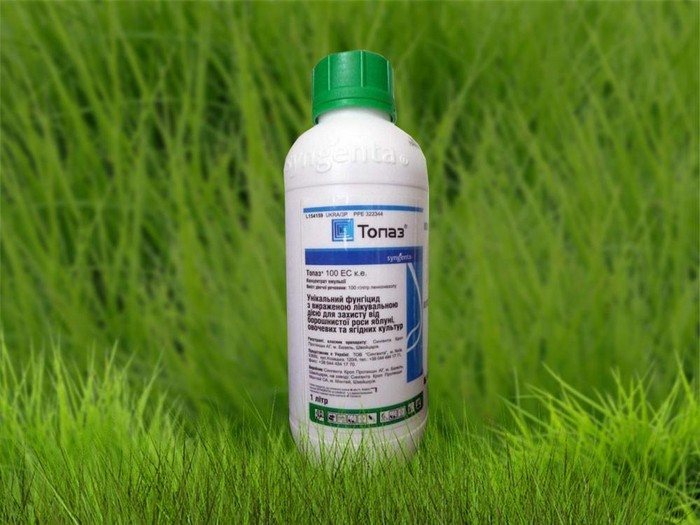
In the future, you should inspect the roses once a week. Fallen leaves and other plant debris should not be allowed to accumulate near the bushes. The watering regime should be such that the soil in the root zone does not become waterlogged. The soil should dry out between irrigations. It is better to water the bushes in the morning so that the moisture on the leaves dries before nightfall. Nitrogen fertilizers are applied in the spring without exceeding the norm.






